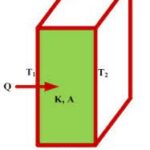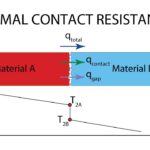| Conduction | Convection | Radiation |
| Consider a plane wall of thickness L and average thermal conductivity k. The two surfaces of the wall are maintained at constant temperatures of T1 and T2 | Consider convection heat transfer from a solid surface of area As and temperature Ts to a fluid whose temperature sufficiently far from the surface is T∞ with a convection heat transfer coefficient h. Newton’s law of cooling for convection heat transfer rate  can be rearranged as can be rearranged as | When the wall is surrounded by a gas, the radiation effects, which we have ignored so far, can be significant and may need to be considered. The rate ofradiation heat transfer between a surface of emissivity ε and area As at temperature Tsand the surrounding surfaces at some average temperature Tsurrcan be expressed as |
  |   |   |
 Thermal resistance of the wall against heat conduction or simply the conduction resistance of the wall. Thermal resistance of the wall against heat conduction or simply the conduction resistance of the wall. |  Thermal resistance of the surface against heat convection, or simply the convection resistance of the surface Thermal resistance of the surface against heat convection, or simply the convection resistance of the surface |  thermal resistance of a surface against radiation, or the radiation resistance thermal resistance of a surface against radiation, or the radiation resistance |
| Thermal resistance of a medium depends on the geometry and the thermal properties of the medium. | |   is the radiation heat transfer coefficient. Note that both is the radiation heat transfer coefficient. Note that both  must be in K in the evaluation of must be in K in the evaluation of |
 can be rearranged as
can be rearranged as 






 Thermal resistance of the wall against heat conduction or simply the conduction resistance of the wall.
Thermal resistance of the wall against heat conduction or simply the conduction resistance of the wall.  Thermal resistance of the surface against heat convection, or simply the convection resistance of the surface
Thermal resistance of the surface against heat convection, or simply the convection resistance of the surface  thermal resistance of a surface against radiation, or the radiation resistance
thermal resistance of a surface against radiation, or the radiation resistance
 is the radiation heat transfer coefficient. Note that both
is the radiation heat transfer coefficient. Note that both  must be in K in the evaluation of
must be in K in the evaluation of




